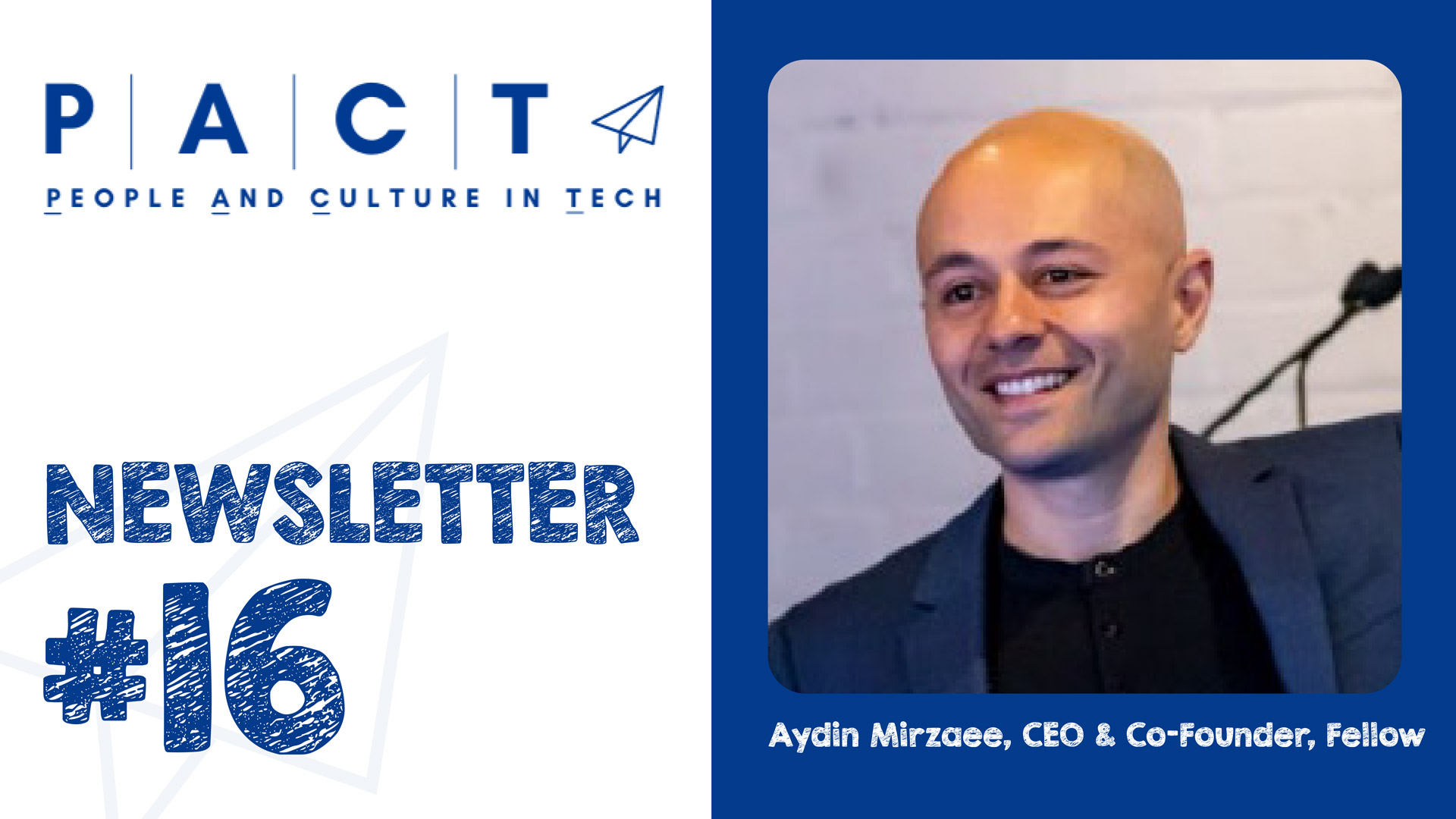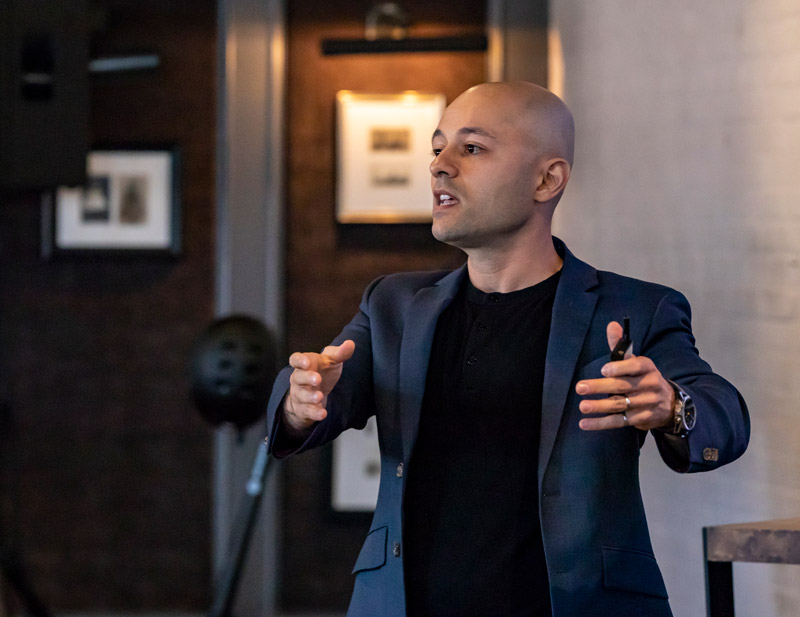How To Take Your Meetings From Dull To Delightful
Bonnie Elgie

The Fellow app is helping managers and their teams work better together and the CEO and co-founder, Aydin Mirzaee shares some of his top aha-moments after speaking with 70 of the world’s top business leaders about having better meetings.
Key takeaways:
- Learn ways to help your managers lead better meetings
- Discover the biggest mistake you’re making
- Understand what every meeting needs to be more effective
- See what Amazon is doing to improve its meeting collaborations
Aydin Mirzaee is a self-described tech-loving entrepreneur with a passion for building great products, leadership and people. He is CEO and co-founder of Fellow, an app that promises to help managers and their teams work better together—and one way they do that is by making every meeting a productive and delightful work session.
How does one go about making meetings as delightful as they are effective? Aydin shares insights garnered from his own experience and learnings from his interviews with over 70 super managers as co-host of the Fellow podcast (#Supermanagers). Guests such as Shopify’s Harley Finkelstein; Kim Scott, author of Radical Candor; and Collin Brier, Jeff Bezos’ technical assistant from Amazon have all shared their experiences and advice. Aydin and his team have incorporated the best from the best into their business model.

Aydin starts by saying that the biggest mistake you can make when it comes to meetings is to ignore the importance of creating a formalized meeting culture in your organization. “If there’s no cohesive strategy, you’re leaving it to chance whether or not your meetings are productive and effective. Managers spend a lot of time in meetings so you want them to work well.”
He advocates that we need to start treating meetings like any other important business function and establish a set of norms. Aydin points to the fact that organizations have processes for hiring, conducting performance reviews and running projects, so why not create a process or best practice guidebook to help managers learn to establish expectations around meetings and run them more productively? They may even make them a delightful opportunity for collaboration and learning.
Here are some of Aydin’s tips for creating a meeting checklist designed to help managers lead better meetings:
- Every meeting should have an agenda
- Review the attendee list to ensure you only have the most necessary people in the room. This list will often change over time.
- Clearly define and communicate the purpose of each meeting
- In recurring meetings, start with a review of action items from the last session to generate a strong sense of accountability.

Many teams have recurring meetings and Aydin suggests asking if they’re getting better over time. “We understand this concept of considering and tweaking other business processes over time. For some reason, we are not applying this same approach to meetings. Why not ask participants for feedback about the meetings and use that information to keep improving the meeting’s effectiveness over time?”
At Fellow, meetings are given version numbers as a way to reinforce meeting culture. The meeting version starts at 1.0 and it’s a reminder of how many meetings came before and that there’s always opportunity to get feedback on these meetings and use that information to keep improving the meeting as the versions progress.”
The Fellow team also identifies two types of meetings – synchronous and asynchronous. Meetings that are purely communication-oriented where information is given out in a one-way style where discussion is not required can be kept asynchronous. This is important because if you’ve got people in different times zones, you need to really think about whether it’s necessary to pull everybody into a meeting at the exact same time. It might be much better to have people spend that time with customers or developing software. So, for Fellow managers to call a synchronous meeting, they must first consider if the purpose for the meeting is highly valuable.
Aydin further describes that many meeting styles can happen asynchronously such as stand up meetings, status meetings and communication meetings. Whereas meetings such as town halls, brainstorming and decision meetings should absolutely be done synchronously.
Amazon has a strong meeting culture and one of their “rules” is that Powerpoint presentations cannot be used at decision meetings. It’s simply because they believe bullet points aren’t the best way to communicate complex ideas. Instead, they ask presenters to write what is called a six-page narrative that they share at the start of the meeting. Attendees then spend the first 20 minutes in silence reading the narrative. The remainder of the meeting is for discussion and debate over what was read. They do this so that they know everyone at the meeting has an opportunity to read the material and is equally informed about the topic.

The Amazon example is proof of how strong meeting culture can improve collaboration, and there are other ways to do the same such as designing your process to be inclusive. Considering different personal styles and adjusting your process accordingly is how you’ll get the best out of every type of person that you have.
Some people are analytical, while others are extroverted and have an easier time joining the conversation. The analytical people may contribute better if the agenda is distributed ahead of the meeting so they have time to formulate their thoughts and therefore find it easier to participate in a collaborative manner. If every person is encouraged to communicate, you're going to open up a lot more opportunity.
Aydin has also had a lot of conversations about how to make online meetings effective in our new reality of hybrid or remote workplaces. One of his favourite podcast guests was Job van der Voort, former VP of product at Git.Lab, who agrees that establishing culture with remote work is absolutely harder to do. However, he says it is worth doing because the potential advantages of engaging the best talent from anywhere, regardless of whether a person lives within easy travelling distance to your physical office, is priceless.
To make remote or hybrid work situations successful, you have to be willing to put in extra effort. You need to be purposeful in your approach and don’t leave things to chance. For instance, if you want to make sure your remote team is having those “hallway conversation opportunities”, you have to find innovative ways to program those moments into the culture.
Aydin affirms that Fellow has done the research and understands what the world's best meetings look like. “If you had the perfect meeting, the absolute 10-star meeting, what would that look like? What elements would it have?” Well, Fellow has taken those elements and is turning their clients’ meetings into workflows, so that they can go in and have delightfully productive meetings without even thinking much about it.
He concludes, “We think that our approach is partly that of an education company and partly a software company. All of our educational material is free to access and we put it out there simply to make the work world a better place. If you want the software to help you do those things seamlessly, then we invite you to use the product.”
BACK








